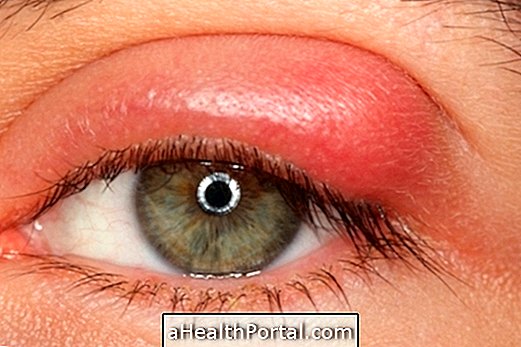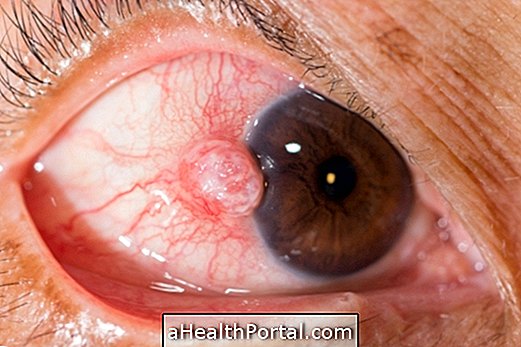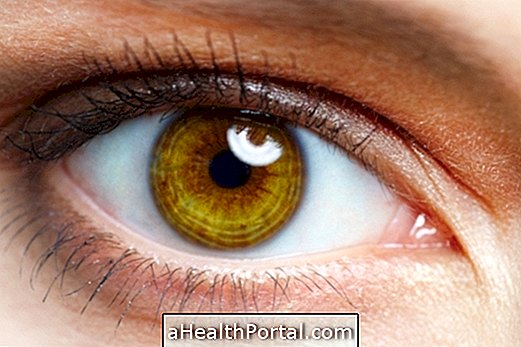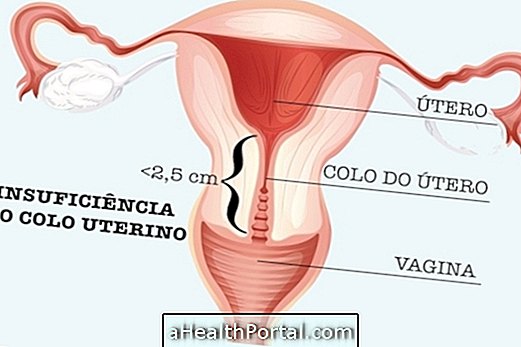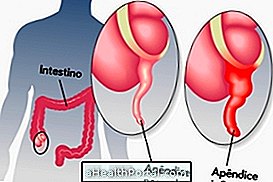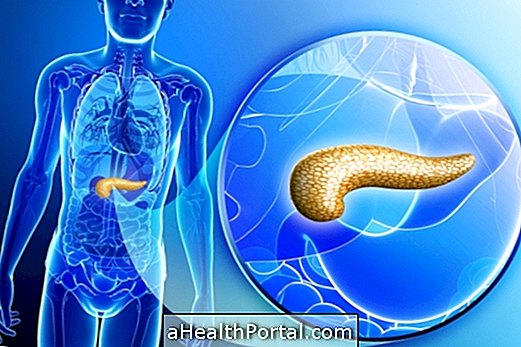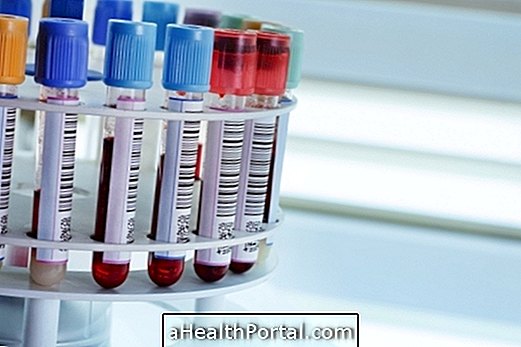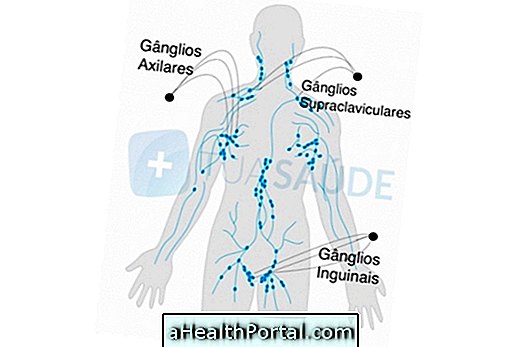Difficulty in seeing, severe eye pain or nausea and vomiting are some of the symptoms that high pressure in the eyes can cause, an eye disease that causes progressive decrease of vision. This is due to the death of the optic nerve cells and the disease can even cause blindness if not treated from the beginning when the initial symptoms appear.
High blood pressure in the eyes is a condition also known as glaucoma, which can cause pressure in the eyes to go from 21 mmHg (normal value) to 70 mmHg, which is usually controlled with drops and drops that reduce blood pressure .
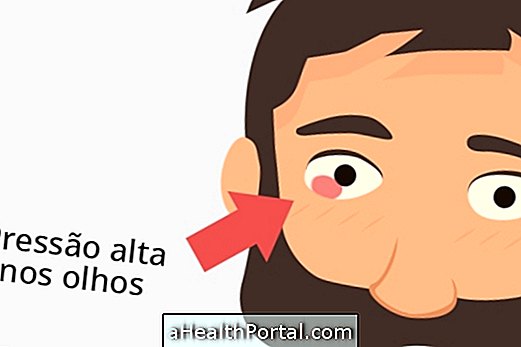
Main Symptoms of High Blood Pressure in the Eyes
Some of the key symptoms that may indicate high blood pressure include:
- Severe pain in the eyes and around the eyes;
- Headache;
- Redness in the eye;
- Vision problems;
- Difficulty in seeing in the dark;
- Nausea and vomiting;
- Enlargement of the black part of the eye, also known as a pupil, or the size of the eyes;
- Blurred and blurred vision;
- Observation of arcs around lights;
- Decreased peripheral vision.
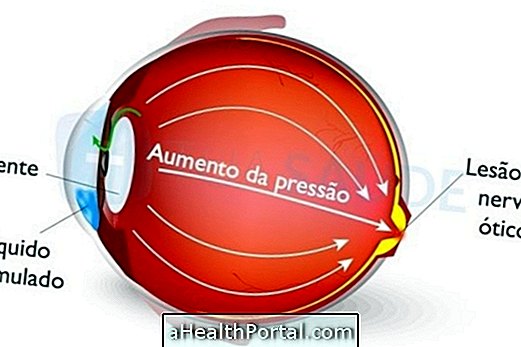
These are some of the general symptoms that may indicate the presence of glaucoma, however the symptoms differ somewhat depending on the type of glaucoma present and the most common types rarely cause symptoms. Know the Characteristics of Different Types of Glaucoma in How to Treat Glaucoma to Prevent Blindness.
In the presence of some of these symptoms, it is recommended to consult an ophthalmologist as soon as possible, so that the doctor can diagnose the problem. Generally, the diagnosis of Glaucoma can be done through a complete Ophthalmological Exam conducted by the doctor, which will include a Tonometry, a test that allows you to measure the pressure inside the eye. As in most cases glaucoma does not cause symptoms, it is recommended to perform this ophthalmologic examination at least once a year, especially from 40 years of age.
Main causes of high blood pressure
High pressure in the eyes arises when there is an imbalance between the production of ocular fluid and its drainage, which leads to an accumulation of fluid inside the eye, which increases eye pressure. High blood pressure or glaucoma can have different causes, which include:
- Family history of glaucoma;
- Excessive production of ocular fluid;
- Obstruction of the eye drainage system, which allows the removal of liquid. This problem can also be known by angle;
- Prolonged or exaggerated use of Prednisone or Dexamethasone;
- Trauma to the eye caused by strokes, bleeding, ocular tumor or inflammation for example.
- Performing ocular surgery, especially performed for the treatment of cataracts.
In addition, Glaucoma can also occur in people over 60 years of age, suffering from high blood pressure or suffering from axial myopia.
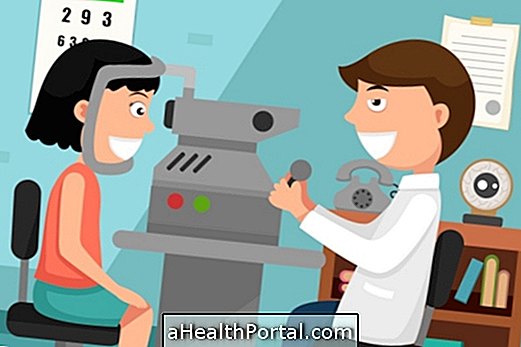
Generally, the treatment of high pressure in the eyes can be done with the use of eye drops or remedies, in which cases it may be necessary to perform laser treatments or an eye surgery. Learn more about what ways to treat glaucoma in glaucoma has no cure but treatment prevents blindness.
High blood pressure in the eyes can cause scleritis, an inflammation of the eyes that can also lead to blindness. Here's how to quickly identify it here.
